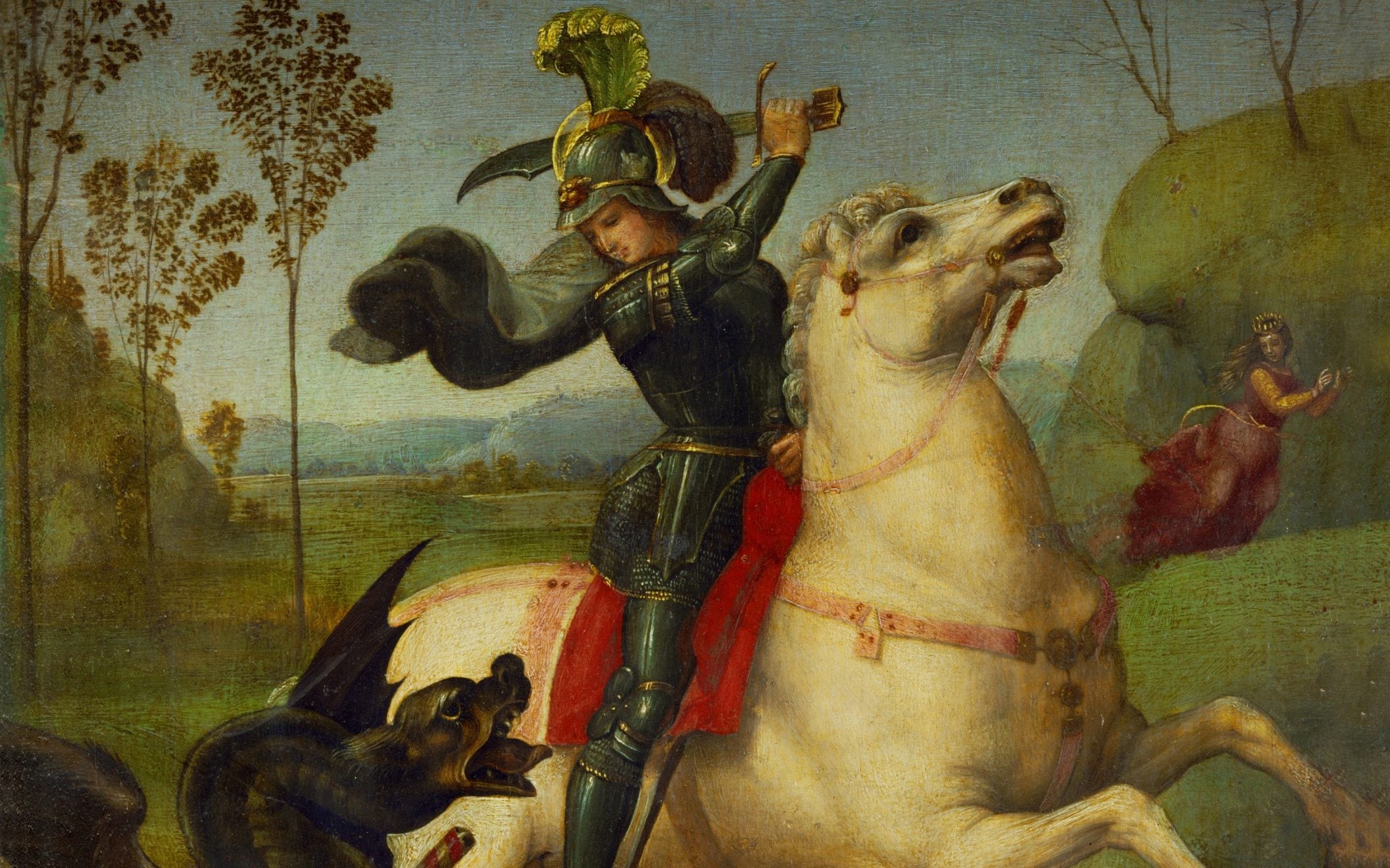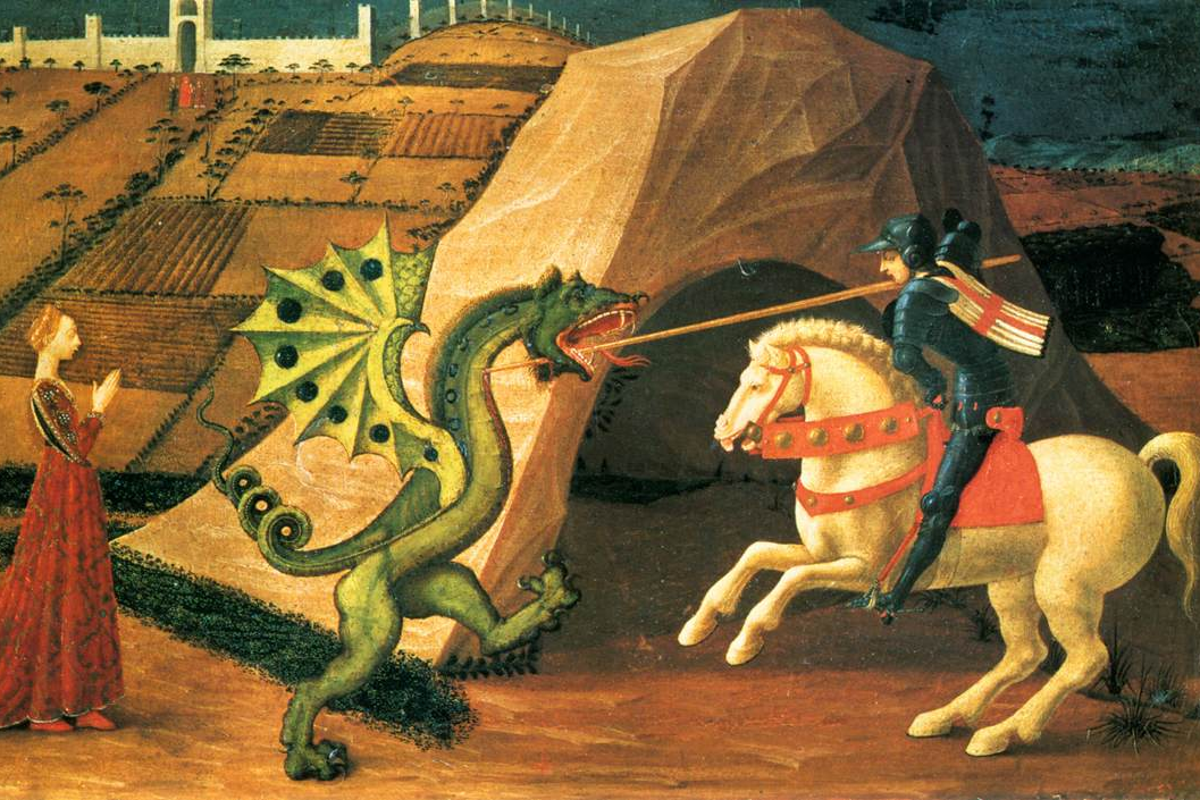
St George and The Dragon
23rd April 2021

Today marks the Feast Day in England of our patron Saint, St George. So how did 'George of Lydda', a Turkish born soldier serving in the Roman army, achieve this status? The historical facts of St George & the Dragon are pretty thin and as with most hero's journeys, there have been embellishments along the way. So, what are the facts that made him become one of our most venerated saints? And was there really a dragon?
St George was born in the 3rd century AD in a place called Cappadocia which is now modern-day Turkey. It is proposed that he died in AD 303 in Lydda, which is now modern-day Israel, in the Roman province of Palestine.
Although he has been depicted in popular culture as a gallant knight in shining armour, the historical facts speak of a very different St. George. Stemming from around the 11th century, he seems to have begun to be represented as a warrior knight on his sturdy steed but the more likely story is that he was an officer in the Roman army.
There are various forms of George's story. In the Greek tradition, George was born to Greek Christian parents, in Cappadocia, an historical region of central Anatolia. His father died when he was fourteen and his mother returned with George to her homeland of Syria Palaestina, the name given to the Roman province of Judea. After his mother died he travelled to the eastern imperial capital Nicomedia, where he joined the Roman army.
The early part of the 4th century saw much persecution of Christians under the direction of Emperor Diocletian. A dynamic leader, Gaius Aurelius Valerius Diocletianus restored an efficient government to his empire after a century of near-anarchy. His management and leadership laid the foundations for the Byzantine Empire in the East and although he will go down in history for his successful reforms, the end of his reign was blighted by the last major persecution of the Christians. It is believed that during such persecutions, St George was executed for refusing to renounce his Christian faith and make sacrifices in honour of the pagan gods.
Like many saints before him, St George was martyred after he died for his Christian faith, his reputation for honour, bravery and holiness spreading across Europe. He was canonised in AD 494 by Pope Gelasius, who stated he was one 'whose names are justly revered among men but whose acts are known only to God'. It is quite astounding that a man who had never even visited the shores of our land, became to be celebrated in England from the 9th century onwards, April 23rd possibly being the date of his martyrdom.

So, what about that dragon?
The Golden Legend narrative is the main source of the story of Saint George and the Dragon. The story tells that he freed the city of Silene, modern-day Libya, from a dragon with a penchant for human flesh. This act of heroism is said to have impressed the people of Silene so greatly that they decided to convert to Christianity but as with all great stories, it is more fantasy than reality. Medieval stories of heroism and noble acts were filled with fantastical notions but the story more than likely represented the battle between good and evil.
Following the Battle of Agincourt in 1415, St George's Day became one of the most important feast days in the English calendar. In 1940 King George VI created a new award, "for acts of the greatest heroism or for most conspicuous courage in circumstance of extreme danger." The medal, The George Cross, bears the image of St George slaying the dragon.